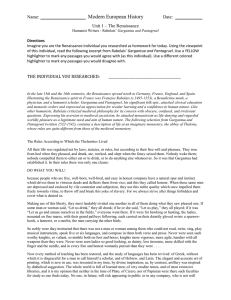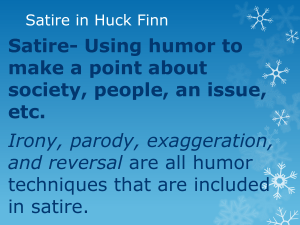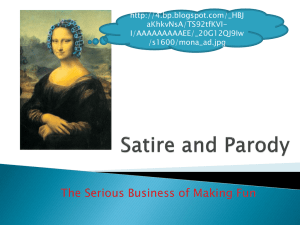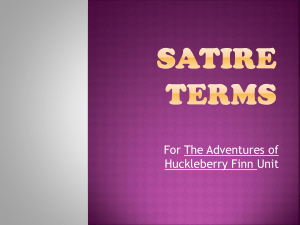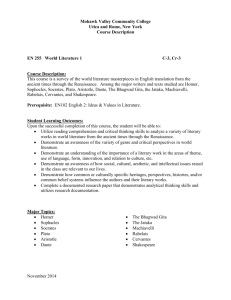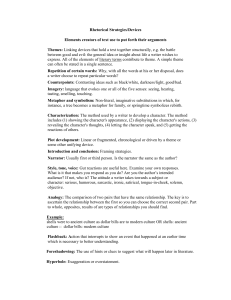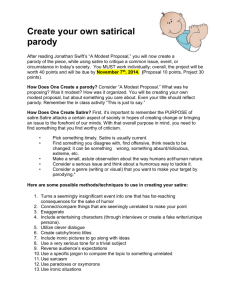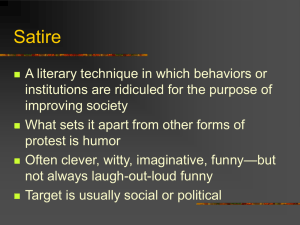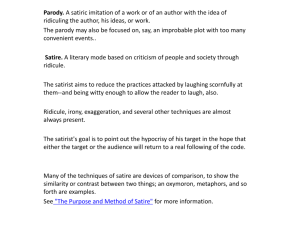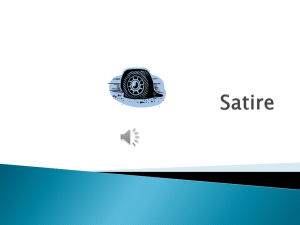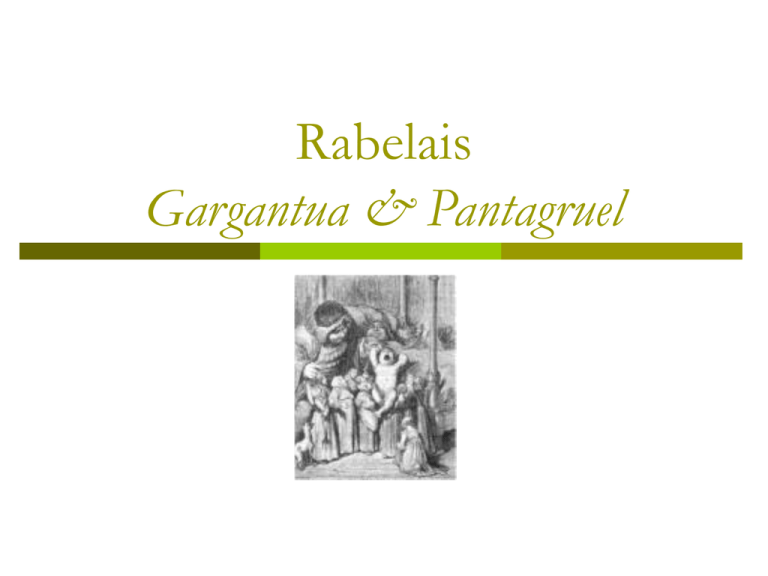
Rabelais
Gargantua & Pantagruel
Sui Generis
Rabelais’ books look like installments of a novel,
but really defies classification [like nothing else].
Critical interpretations [two opposite views]
expression of a comic genius concerned purely with
entertainment for its own sake
deeply-felt philosophical and religious messages
Rabelais was in constant danger from powerful
opponents who explicitly condemned his works
for the religious and political ideas which they
expressed.
Literacy
By 1532 literacy was no longer just for the
aristocratic and the highly educated.
Main market was the rising merchant class
Popular fiction was mostly made up of sensationalized
prose versions of medieval epics and romances, replete
with knights, damsels in distress, giants, magic, and
sex.
Prospective buyers would have seen a story about
giants, ensuring sales, but they got much more!
So popular were these genres that they were
already being parodied [as does Rabelais &
Cervantes]
Satire & Parody
Satire is a verbal or visual mode of expression
that uses ridicule to diminish its subject in the
eyes of its audience.
The authors are intent on making fun of the absurdity,
pretension and degeneracy of the respective worlds they
are portraying [usually the society they are currently
living in].
Parody is a form of satire that imitates another
work of art [like a sonnet or romance novel] in
order to ridicule it.
When the conventions of a genre have become defined,
authors often lampoon these conventions, making the
reader laugh.
Humanism
philosophical and literary movement that
centers on humans and their values,
capacities, and worth
emphasis on classical studies and a
conscious return to classical ideals and
forms as a result of the rediscovery and
study of the literature, art, and civilization
of ancient Greece and Rome.
formal education very highly valued
often a search for a utopian society where
all are treated well and with dignity

